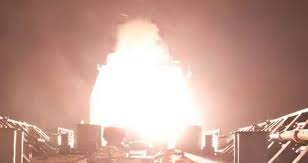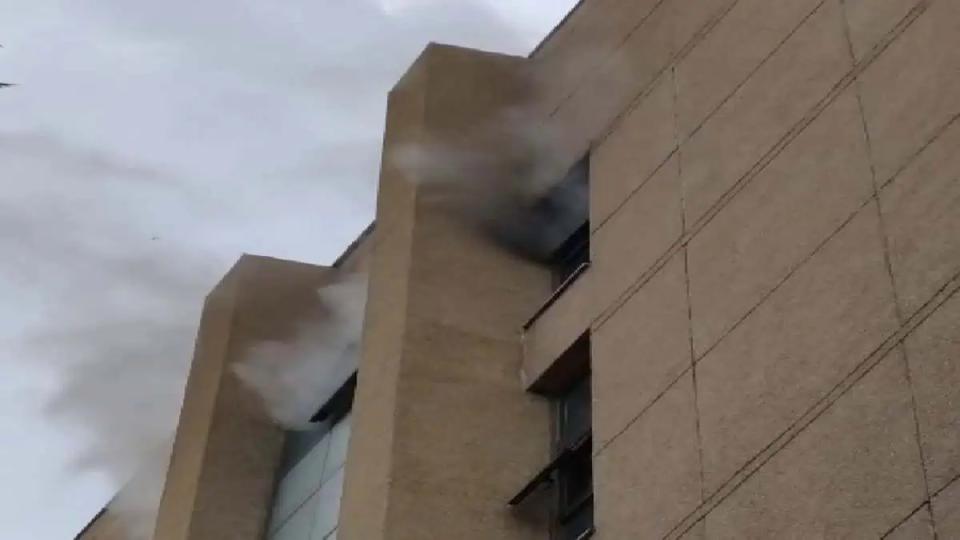Hurricane Matthew: Emiratis in US told to contact embassy
Thu 06 Oct 2016, 15:47:27

Shelters in Florida, Georgia and South Carolina opened their doors after authorities, along with President Barack Obama, urged locals to evacuate their homes.
The fiercest Caribbean storm in nearly a decade slammed into the Bahamas early on Thursday, intensifying as it barreled towards the southeast US coast where a mass exodus was under way with millions heeding warnings to flee inland.
Roadways in Florida, Georgia and North and South Carolina were packed and gas stations and food stores ran out of supplies as Hurricane Matthew approached, packing sustained winds of about 115 miles per hour (185 km per hour), storm surges and heavy rain.
Matthew, which killed at least 26 people and damaged swathes of homes in southern Haiti, was predicted to strengthen from a Category 3 to 4 storm en route to eastern Florida. Landfall was expected there on Thursday night, the US National Hurricane Center said.
"Everyone in our state must prepare now for a direct hit," Florida Governor Scott told a news conference in Tallahassee on Wednesday.
"If Matthew directly impacts Florida, the destruction could be catastrophic and you need to be prepared."
The four states in the hurricane's path declared states of emergency enabling their governors to mobilize the National Guard. Shelters in Florida, Georgia and South Carolina opened their doors after authorities, along with President Barack Obama, urged locals to evacuate their homes.
Schools and airports across the region were closed on Thursday and some hospitals evacuated patients, according to local media.
'All boarded up'
In all, more than 12 million US residents were under a hurricane watches and warnings, according to the Weather Channel.
In Florida, fuel stations posted "out of gas" signs after cars waited in long lines to fill up.
"Every gas station I went to is empty," said motorist Charles Bivona in a Tweet late Wednesday. "Here comes Hurricane Matthew. Um, yikes."
Others, meanwhile, prepared to wait out the storm.
People stocked up on water, milk and canned goods, emptying grocery store shelves, footage from local media showed.
Residents and business owners boarded up windows with plywood and hurricane shutters and placed sandbags down to protect property against flooding.
"All boarded up and ready to bunker down. God be with us," West Palm Beach Florida resident Brad Gray said in a Tweet.
The National Hurricane Center said it was still too soon to predict where
in the United States Matthew was likely to do the most damage
in the United States Matthew was likely to do the most damage
On Tuesday and Wednesday the storm whipped Cuba and Haiti with 140 mile-per-hour (230 kph) winds and torrential rains, pummeling towns and destroying livestock, crops and homes.
The devastation in Haiti prompted authorities to postpone a presidential election.
A look at some of the most deadly US hurricanes
Matthew could become the first major hurricane to make landfall in the United States since Wilma in October 2005 if it maintains at least Category 3 status with winds of 110 mph or more.
Current forecasts show Matthew - with maximum sustained winds of 115 mph - could bring heavy rain, powerful winds, storm surge and other problems to the U.S. coast from Florida to the Carolinas in the coming days. Forecasters warn it has the potential to be incredibly destructive, adding it is forecast to strengthen further over the coming day or so and could become a Category 4 storm as it nears Florida.
Below is a look at some other destructive hurricanes in U.S. history :
- In 2005, Hurricane Katrina left 1,800 people dead and was the costliest storm in US. history with damage estimated at $108 billion. It was a Category 3 storm when it made landfall over Louisiana.
- In 1938, roughly 700 people died in the Great New England Hurricane. It raked the region as a Category 3 storm and wiped out railroad tracks, utilities, homes, crops and the fishing industry, according to the National Weather Service.
- In 1928, the Great Okeechobee Hurricane struck Florida as a Category 4 storm, leaving more than 2,500 dead. Lake Okeechobee overflowed, causing disastrous flooding that inundated several communities.
- In 1900, a hurricane made landfall in Galveston, Texas, with winds estimated to be at least 130 miles per hour and a storm surge of a whopping 15 feet. Some 8,000 people died, and the National Oceanic and Atmospheric Administration says damage estimates exceeded $20 million at the time - roughly $700 million in today's dollars.

No Comments For This Post, Be first to write a Comment.
Most viewed from International
Most viewed from World
AIMIM News
Latest Urdu News
Most Viewed
May 26, 2020
Do you think Canada-India relations will improve under New PM Mark Carney?
Latest Videos View All
Like Us
Home
About Us
Advertise With Us
All Polls
Epaper Archives
Privacy Policy
Contact Us
Download Etemaad App
© 2025 Etemaad Daily News, All Rights Reserved.

.jpg)






.jpg)
.jpg)


.jpg)
.jpg)
.jpg)
.jpg)
.jpg)
.jpg)
























